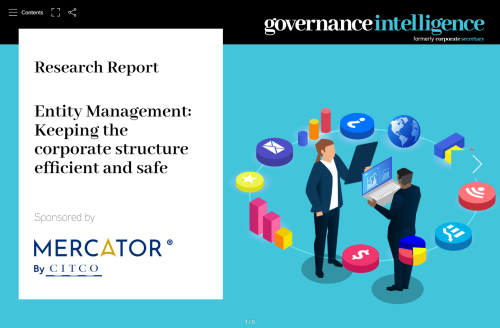NLRB decisions, EPA gas emissions rule and whistleblowing regulations come under the spotlight
The Supreme Court will issue only a handful of decisions during its current term with broad compliance implications, but three of them will be absolute doozies: Noel Canning vs NLRB, Lawson vs FMR LLC (the first Sarbanes-Oxley whistleblower case) and a set of lawsuits concerning the regulation of greenhouse gases. While Lawson could affect corporate compliance regimes at hundreds of thousands of privately held companies, and the greenhouse gases cases could subject millions of businesses to regulation neither they nor the Environmental Protection Agency (EPA) wants, the most seminal decision will be Noel Canning.
The issue in Noel Canning sounds arcane: what is a constitutional ‘recess’ appointment? The practical question behind that existential one is: did President Obama – and many presidents before him – violate the American constitution when he appointed people to the National Labor Relations Board (NLRB) without the Senate’s advice and consent?
The court’s answer will uphold or invalidate a large swath of existing NLRB rules and decisions. That’s because, to be valid, the rules and decisions have to be adopted by a constitutionally legitimate quorum of NLRB members and, at various times, the NLRB has had a quorum only if the challenged type of ‘recess’ appointments are constitutional.
If the justices declare the Noel Canning recess appointments to be unconstitutional, the immediate impact will be huge. ‘In addition to the 1,600 or so cases that are directly affected by Noel Canning and being held in abeyance pending a decision, there are a host of other potential cases including those that never went to the NLRB that could also be nullified,’ explains Michael Lotito, co-chair of the Workplace Policy Institute at law firm Littler Mendelson. ‘If the NLRB was not properly constituted, it could not even appoint regional directors.’
Lotito says if a regional director was appointed by ‘an improperly constituted NLRB, everything that flows from that regional director’s decision is suspect.’ As a result, he advises compliance officers to ‘do an inventory of NLRB cases of all kinds over the last several years, check to see the status and ensure the company’s legal position is being preserved.’
As the issue in Noel Canning is constitutional, its impact will extend throughout government to any agency ever led by one or more recess appointees. If the Noel Canning appointment is invalidated, an obvious target for a follow-on challenge is the Consumer Financial Protection Bureau. Noel Canning will be argued on January 11, 2014.
Environmental issues
There are several environmental cases this term that also risk major compliance consequences. The court agreed to hear eight appeals challenging the EPA’s ability to regulate greenhouse gases emitted by stationary sources, such as buildings. While the EPA has, for more than 30 years, asserted that once it regulates a type of air pollution it can regulate any source of that pollution, these cases challenge that premise.
In bringing its challenge, industry makes two arguments. First, that having the power to regulate car and truck greenhouse gas emissions doesn’t give the EPA the authority to regulate stationary sources. The second, narrower argument asserts that even if the EPA has the regulatory power, the challenged rule is impermissible because it violates the letter of the Clean Air Act.
What’s ironic about the second argument is that the EPA’s rule is much more business-friendly than what the Clean Air Act dictates.
The statute requires the EPA to regulate polluters that emit more than certain thresholds of pollutants. For pollutants such as sulfur dioxide, those thresholds target significant polluters. But for carbon dioxide, the thresholds are so low that even apartment buildings would require regulation. As a result, the three basic possibilities for this case are:
• no power to regulate, so no new compliance regimes for stationary carbon dioxide emitters required
• no power to regulate at the EPA’s preferred thresholds, so (after new rule making and related delay) there would be new compliance regimes for millions of businesses the EPA had hoped to exempt
• the EPA’s rule stands, and new compliance regimes are imposed on major emitters of greenhouse gases.
Argument on this case is expected in February, and the opinion will probably be issued under the name Utility Air Regulatory Group vs Environmental Protection Agency. Companies should be aware the court also agreed to decide two cases involving EME Homer City Generation to determine whether the EPA can force states to regulate air polluters in their states to protect the residents of downwind states. If the EPA loses, it will have to make much more precise assessments of how big a problem each upwind state is than it already has.
As a result, new compliance regimes would recede into the distant future. If the EPA wins, 28 states will have to start restricting air polluters in ways that satisfy the EPA. Businesses in those states could face significant new compliance regimes as a result.
Blowing the whistle
Finally, in Lawson, the Supreme Court will parse the text of Sarbanes-Oxley to decide whether the whistleblower protections of that act apply only to employees of public companies or whether they also extend to the employees of private contractors that contract with the public companies.
If contractors’ employees are covered, hundreds of thousands of private companies will ‘have to look over their shoulder for allegations of fraud from within their company,’ notes Edward Ellis, co-chair of Littler Mendelson’s whistleblowing & retaliation practice. (Littler Mendelson filed an amicus brief on the employer’s side in the case.) ‘And not just financial fraud. Sarbanes-Oxley is basically an anti-fraud statute. Once you get to mail or wire fraud, it doesn’t have to be related to financial matters: it could be related to product safety, human resources issues, product usefulness.’
Will thousands of NLRB rules and decisions be invalidated with five (or more) signatures? Will landlords need to start tracking the carbon dioxide emissions of their apartment buildings? And will hundreds of thousands of private companies have to re-examine their employment practices in light of Sarbanes-Oxley’s whistleblower protections? Stay tuned; the answers will be in by the end of June 2014.








